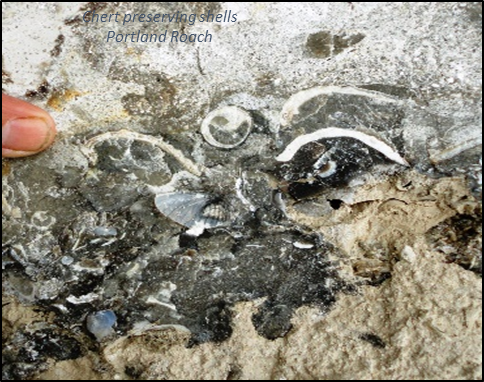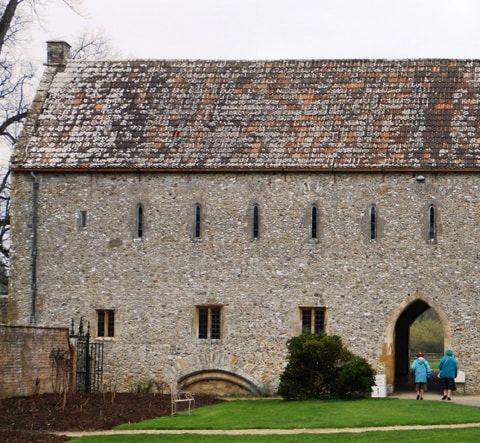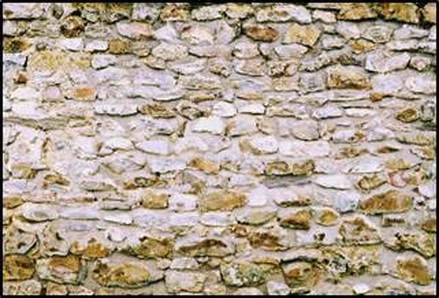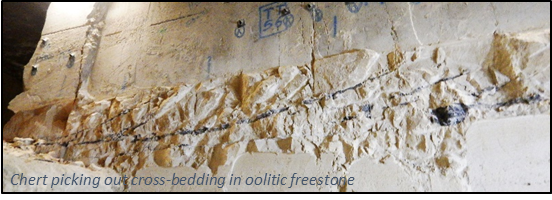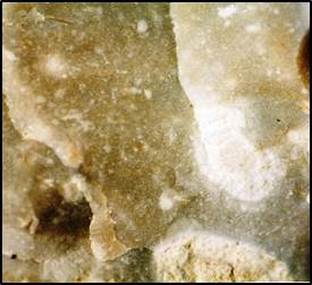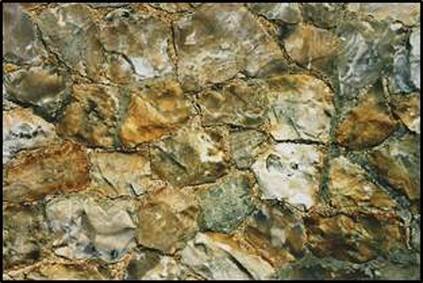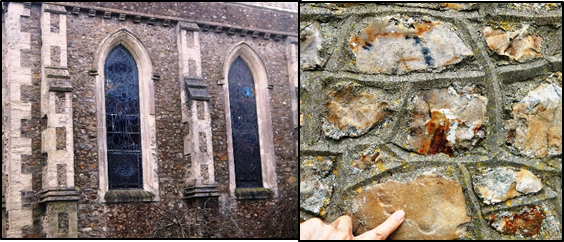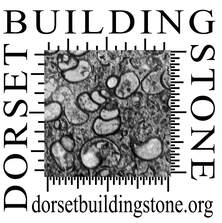Chert (Lead Author: WGT)
Chert is a dense, very hard, siliceous rock which occurs in the Upper Jurassic Portland Stone Formation, the Lower Cretaceous Lulworth Formation and the Mid-Cretaceous Upper Greensand Formation. Flint is a similar Upper Cretaceous siliceous rock but is covered separately in this website. In all cases the silica is biogenic, sourced by sponges and micro-organisms with a silica skeleton and, in most cases, the silica has replaced a host limestone.
|
Portland Stone Formation: This comprises the Portland Chert Member overlain by the Portland Freestone Member. The former consists of grey shelly lime mudstones rich in calcite casts of marine sponge spicules (Rhaxella). Grey chert occurs throughout in discontinuous patches and layers. Chert also occurs in the Freestone Member as thin layers picking out cross-bedded ooid dunes and as patches in the highest levels.
Lulworth Formation: The topmost level of the Worbarrow Tout Member is the “Cherty Freshwater Beds”, lacustrine bioclastic pelletal lime mudstones, with patches of chert. In the Isle of Purbeck, vertebrate bones and footprints are known from these beds. This chert is not known to have been used as a building material.
Chert was quarried from all the hills around the Marshwood Vale, in particular from Hardown Hill, Morecombelake, where several open quarries were cut into the side of the hill and mines driven in from the upper level.
|
Silicification took place during early burial and has preserved the shell structure of bivalves and gastropods which are usually seen as moulds (Portland screws). Chert is also present in the mainland outcrops from Durlston to Portesham. It was never suitable as a building stone but is quarried and crushed on Portland for aggregate. The chert was widely distributed in Mesolithic times for tool manufacture.
Upper Greensand (qv): Chert is common in certain members of the UGS and used widely as a building material, especially in West Dorset and SE Devon. The UGS sediment ranges between marine calcareous sandstone and quartzose bioclastic limestone, usually fine to medium sand grade. Biogenic silica has replaced the calcium carbonate and filled the pore space between sand grains, resulting in zero-porosity chert nodules. These distinctive orange cherts have been used for walling as undressed rubble or knapped to form very durable close-fitted external surfaces. UGS chert was used for tool-making throughout the Palaeolithic to Neolithic periods.
WGT/JT Feb 2017
|

